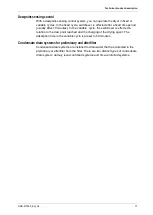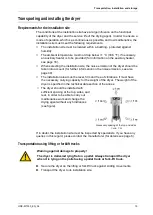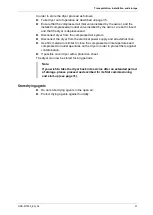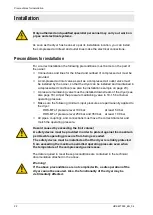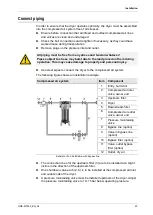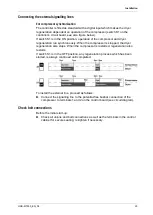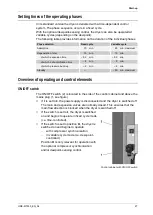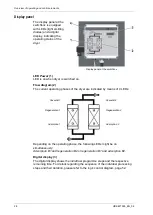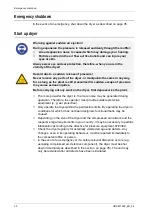
Technical product description
HDK-MT350_EN_04
15
The stored humidity is then removed again from the drying agent and re-
introduced into the ambient environment. To this end, the two vessels alternate
between different operating modes. Whilst in one vessel, compressed air is de-
humidified (adsorption), in the other vessel the humid drying agent is prepared for
another charge (regeneration). These two states, which run in parallel during
compressed air preparation, are described below.
Functional scheme
Adsorption
Damp and contaminated compressed air is firstly delivered by a compressor to
the upstream filter where the water and oil content is removed. The filtered
content is removed from the system by a condensation drain valve. The
compressed air then flows through the adsorbing vessel which is under pressure
from the bottom upwards. In the process the drying agent takes the moisture out
of the air. The downstream filter at the exit to the dryer filters any remaining solids
from the flow of compressed air. The dry compressed air is then supplied to the
consumers via the network.
Regeneration (running in parallel to the adsorption)
At the same time the other vessel is prepared for a renewed take-up of humidity.
This process is called regeneration. Dry compressed air is branched off before
the exit to the network. A needle valve generates a partial current so that this
regenerated gas flows through the vessel at ambient pressure. The moisture
stored in the drying agent is taken by the current of air and let out into the air via
the sound absorber.
Switchover
When the drying agent in the adsorbing vessel has taken up a sufficient level of
humidity, then the switchover between the vessels will be effected between the
vessels. Following switchover, the above-described process is repeated, with the
adsorption and regeneration now taking place in the respective different vessel.

















